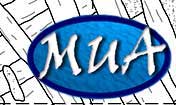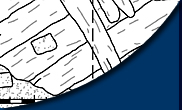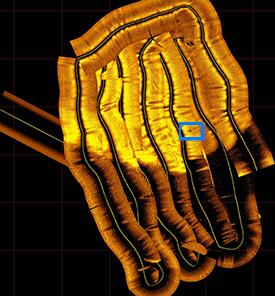
Mosiac of survey data around Emanuel Point. The blue square illustrates EP I's ballast pile. (Close Up)
Even though we can feel the end of this summer’s field school quickly approaching we have been working harder than ever on our underwater projects. On Monday, we had three students and two supervisors open a new unit on the B-street wreck and the unit was finished that same day. At the same time two other students and a supervisor were out searching for other shipwrecks in the Emanuel Point region with side-scan sonar, possibly trying to find the four missing Luna shipwreck. Meanwhile, the rest of the crew continued work on EP II with a large metal detector survey and maintained excavations of the stern and control units.
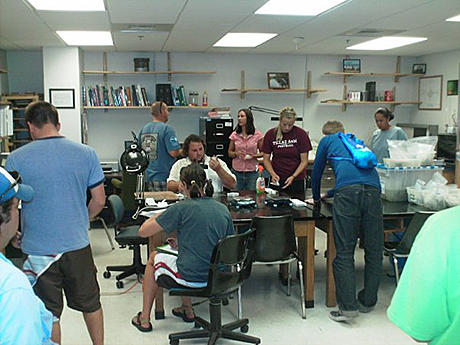
Students in the conservation lab processing artifacts.
On Tuesday, we decided it best to work in the lab due to poor weather and sea conditions. The day did not go without event however. Graduate student and Supervisor Colleen Reese got a helping hand from a few students while floating several sediment samples for floral remains. This process, called flotation, can be daunting as waterlogged botanicals do not float. A special swirling technique was used to make the organic material neutrally buoyant while it was sifted away from the other sediments. The rest of the samples could then be examined for other artifacts.
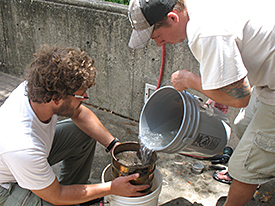
Matt Gifford and Chad Gulseth screening samples for plant remains.
Wednesday saw a return to the B-street wreck. One of the problems associated with excavations on the B-street is that as we dredge, the sand shifts from outside the unit and slides into the unit, making it impossible to excavate in units and removing much of the context of the site. We had a large aluminum box crafted with the hopes that it would keep the sand from moving into our units as we excavated, and today was the first day that we tried to use it. It worked with mixed results, but showed some potential in helping us to excavate the site.
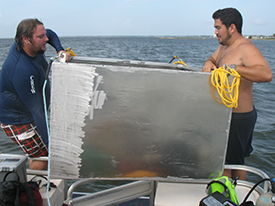
Jake Shidner and Andy Marr setting the aluminum box in the water on the B-Street Schooner site.
Thursday we had the best visibility we have had all summer on EP II. Visitors from a local high school came out to visit us on the barge and they were given an underwater tour of the site without ever getting wet, using the SEA SPY camera. We also took detailed video of our excavated units, as all of the exposed ship timbers we easily visible. The stern of EP II is really starting to come into view as we uncovered more lead sheathing, concretions, and what could possibly be a piece of the rudder. Thursday also gave a few students the opportunity to revisit the Brick Wreck. The Brick Wreck is a nineteenth century cargo vessel that still contains her shipment of stacked bricks as she sits at the bottom of Pensacola Bay. Divers reestablished the baseline and dredged on a previously established unit.

Chad Gulseth, Scott Sorset, and Mercedes Harrold discussing their dive plan for metal detecting.
Friday saw a second trip to the lab for the week, as the weather was again unfavorable to excavations on the bay. Being in the lab allowed students to begin the conservation process on many of the artifacts recovered over the summer, completing tasks such as starting conservation records, measuring and weighing artifacts, and photographing artifacts before the actual conservation process starts. The lab day also allowed us to catch up on all of the paperwork we have during field school, fixing any errors or missing data and making sure we have everything we need before heading into our final week of field school.
Please feel free to contact us if you have any questions or concerns at: mua@keimaps.com.
Return to Project Journal home page.
